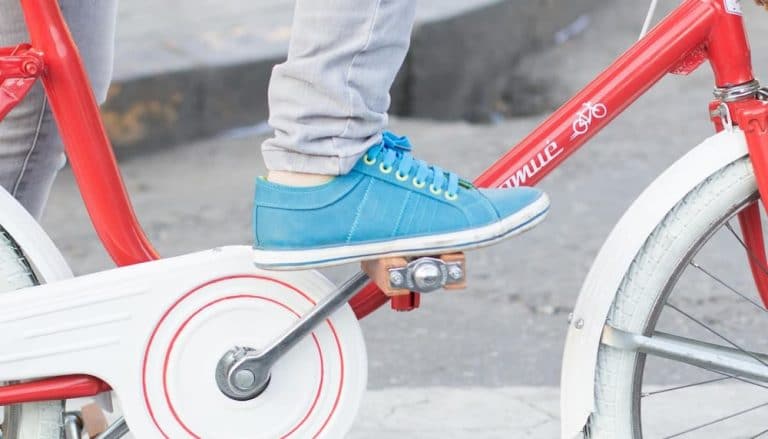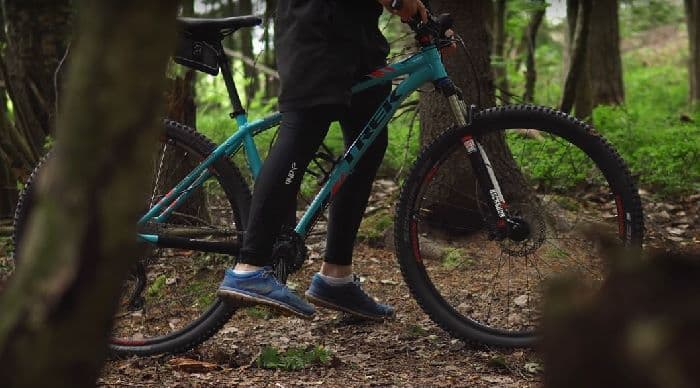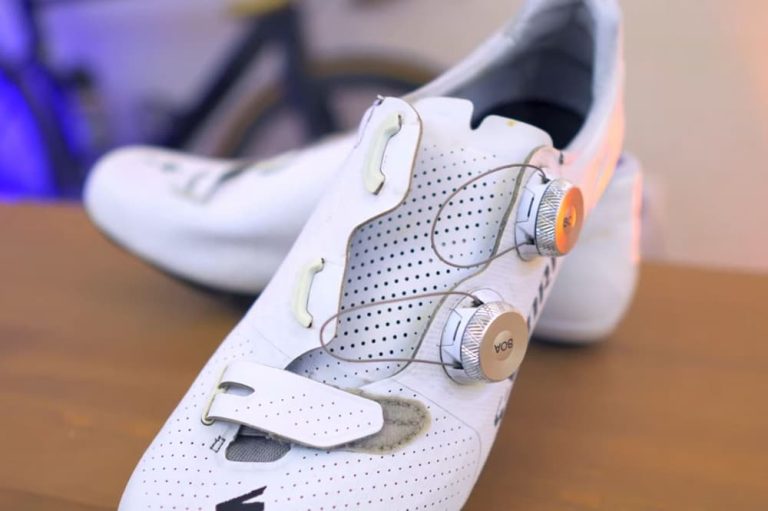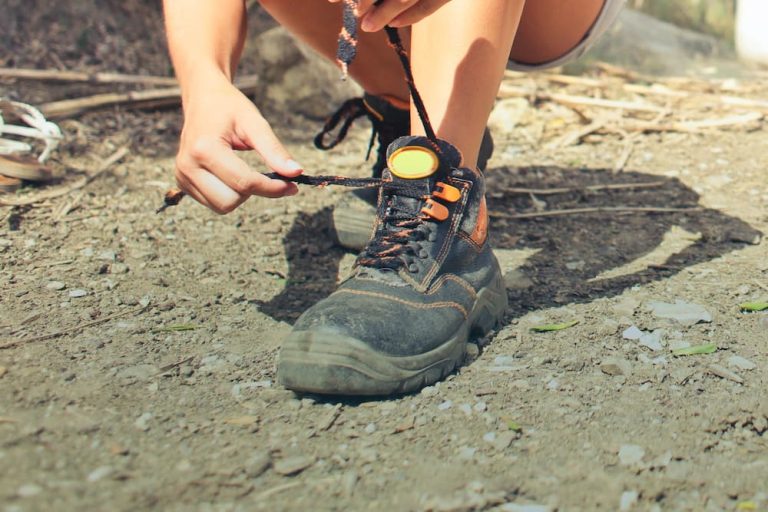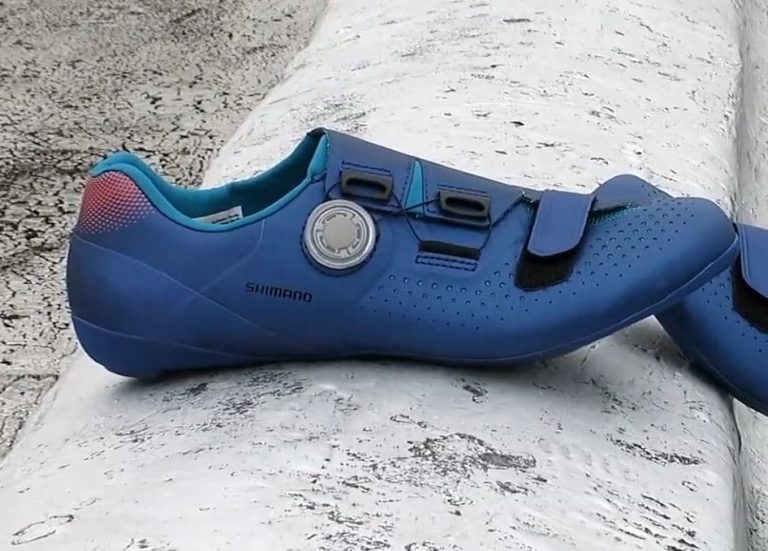How to Know if Your Cycling Shoes Are Too Small or Too Big?
When I started riding regularly, I experienced firsthand the discomfort of ill-fitting cycling shoes. You might relate to the problem of shoes that pinch or, conversely, leave too much room, affecting your ride. This discomfort isn’t just a minor inconvenience. Wrong size shoes can significantly hamper your cycling performance and enjoyment.
The agitation is real – cycling with the wrong shoe size leads to unnecessary struggles. From numb feet to blisters, the wrong size can ruin what should be a pleasant ride. For competitive cyclists, it even means losing essential energy and control.
In this article, we address these issues head-on. You’ll learn how to identify if your cycling shoes are too small or too big and the importance of the perfect fit. Whether you’re a pro rider or a weekend enthusiast, understanding the nuances of cycling shoe fit is key to enhancing your performance and enjoyment on two wheels.
Contents
- Identifying If Your Cycling Shoes Are Too Small: Key Signs
- Signs That Your Cycling Shoes Might Be Too Large
- How Much Toe Room In Cycling Shoes?
- Should I Buy Cycling Shoes A Size Bigger?
- Should Cycling Shoes Be Tight?
- How Tight Should Cycling Shoes Be?
- How do I know if my cycling shoes are the right size?
- Can cycling shoes stretch over time?
- Final Words
Identifying If Your Cycling Shoes Are Too Small: Key Signs
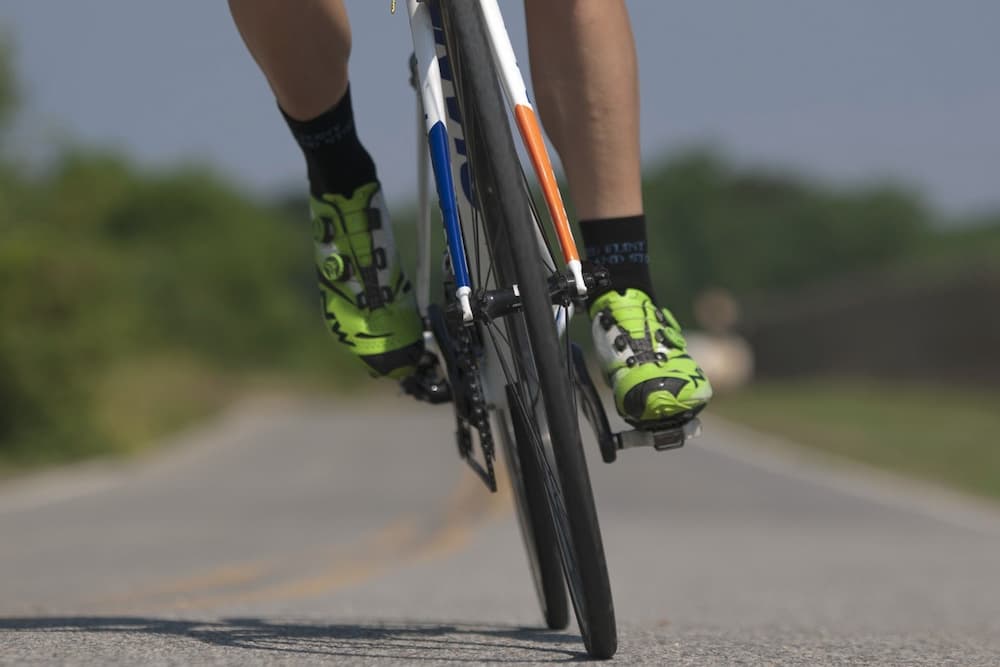
One of the best ways to determine if your cycling shoes are too small is to feel your toe pressing against the front of your shoe with some pressure.
If you put the shoes on and feel pressure on your toe, you probably shouldn’t buy the shoe. It’s advisable that you don’t buy shoes that feel too tight or small and don’t expect them to stretch out when you wear them.
Tighter fitting shoes can constrict your feet and make cycling very uncomfortable. A comfortable, snug fit is always the best for cycling shoes.
Related reading: How To Keep Shoelaces Out Of Bike Chain?
Signs That Your Cycling Shoes Might Be Too Large
As mentioned earlier, the best size for a pair of cycling shoes is the one that fits you well and that you still feel comfortable in. Of course, there should still be no pressure between the front of your shoe and your toes. The shoe shouldn’t allow any lateral movement.
If you opt for slightly larger cycling shoes, they may offer more comfort, which is ideal for casual riders.
If you’re an athlete or a competitive cyclist and buy shoes in a larger size, you’ll waste a lot of energy while cycling because you’ll move around unnecessarily in your shoes.
This is a problem because you must remember that there are many contact points when cycling. However, the most critical points are your feet. This is because they’re the ones that transfer the power to the pedals. That’s why it’s essential to ensure you don’t waste energy.
The extra room in your shoes can affect your ride if you’re a racer. Otherwise, you should be able to get by with a pair of slightly larger shoes.
How Much Toe Room In Cycling Shoes?
Many people have different opinions about finding the correct shoe size for your toes. Some feel that going a half size larger will allow more room for your toes so that your big toe doesn’t dig into the shoe’s skin, while others believe that a snug fit will balance your feet better.
Did you know that larger shoes with more “wiggle room” can also cause the material of your shoe to disintegrate? That’s because your toes keep bumping against the skin and destroying the layers underneath when there’s more space between them.
The truth is, you don’t need that much toe room. The maximum toe room you need is only a few millimeters. Your shoes should only be large enough for your toes to touch the brim without putting pressure on them. Your toes must stretch out and align properly in your cycling shoes without being pushed back or pinched.
You can use a simple trick to match your foot with the shoe’s insole. This will give you an ideal measurement.
Should I Buy Cycling Shoes A Size Bigger?
Unlike trainers, jogging shoes, and non-cycling shoes in general, cycling shoes aren’t required in a larger size. For example, when you go running, your foot exerts force mainly on the front part of the shoe. On the other hand, there’s no need to turn in different directions when cycling. At most, you need a few millimeters of space between your big toe and the edge of the insole so your toes don’t have to squeeze as you move.
Don’t be fooled by the idea that a larger shoe will compensate for a wide foot. If the cleats on the bottom of your shoe aren’t parallel to your foot’s pressure points, you’re buying the wrong shoe.
When you pedal, most of the force is transmitted from the front’s widest part of your foot. But if the force per area returned is unusually high, it may be because you bought larger shoes.
Your feet need to be held firmly by your shoes, whether the sides, heel, midfoot, or forefoot are tight.
Related reading: How to Clean Cycling Shoes?
Should Cycling Shoes Be Tight?
Yes, your cycling shoes should be tight enough that your feet don’t move when wearing them and pedaling. If the shoe wobbles when you pedal, you’ll feel uncomfortable, and it’ll be harder to control your pedaling.
How Tight Should Cycling Shoes Be?
How tight cycling shoes are should depend on personal preference. However, cycling shoes should be half to one size smaller than regular walking shoes. The size of the shoe also depends on its cut.
In addition, there shouldn’t be much wiggle room in front of the toes, but just enough so that the toes don’t press against the sole.
How do I know if my cycling shoes are the right size?
To determine the right size, ensure there’s a snug fit without pressure on your toes. A few millimeters of space at the front is ideal. Your foot shouldn’t slide inside the shoe, and the heel should remain in place during pedaling.
Can cycling shoes stretch over time?
No, cycling shoes likely will not stretch over time. Quality cycling shoes, especially those made of rigid materials like synthetic leather or carbon, have minimal stretch. Expecting them to stretch to fit better is not advisable. Choose a size that fits well from the start.
Final Words
When I started riding regularly, I learned about cycling shoes’ crucial role in the overall riding experience. In this article, I explored the nuances of finding that perfect fit. The right shoe size is non-negotiable for comfort and performance for every rider.
Too small-shoes can cause discomfort and blisters, while oversized ones can lead to energy loss and less control. The ideal cycling shoe snugly embraces your foot without causing pressure, allowing for a few millimeters of toe room. The size is not everything – how your foot aligns with the shoe’s structure and design is important. As we discussed, cycling shoes differ from regular trainers’ requirements and fit.
Personal preference plays a significant role. Some cyclists might prefer a tighter fit, while others opt for a bit more room. The key is to find a balance that suits your foot shape and cycling style. Investing in the right pair of cycling shoes is a step towards enhancing your cycling experience, whether it’s a long tour or a quick spin around the block.

